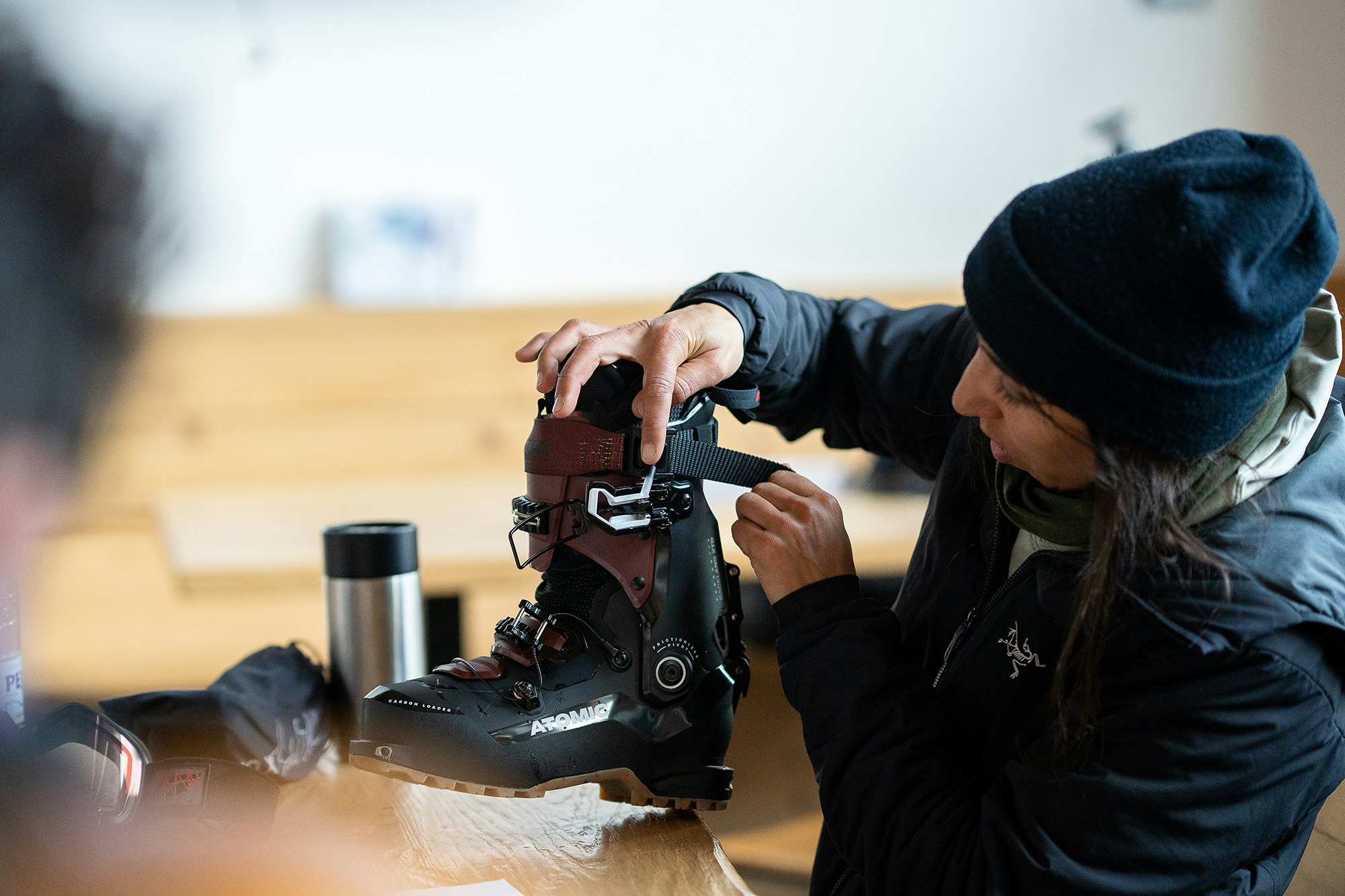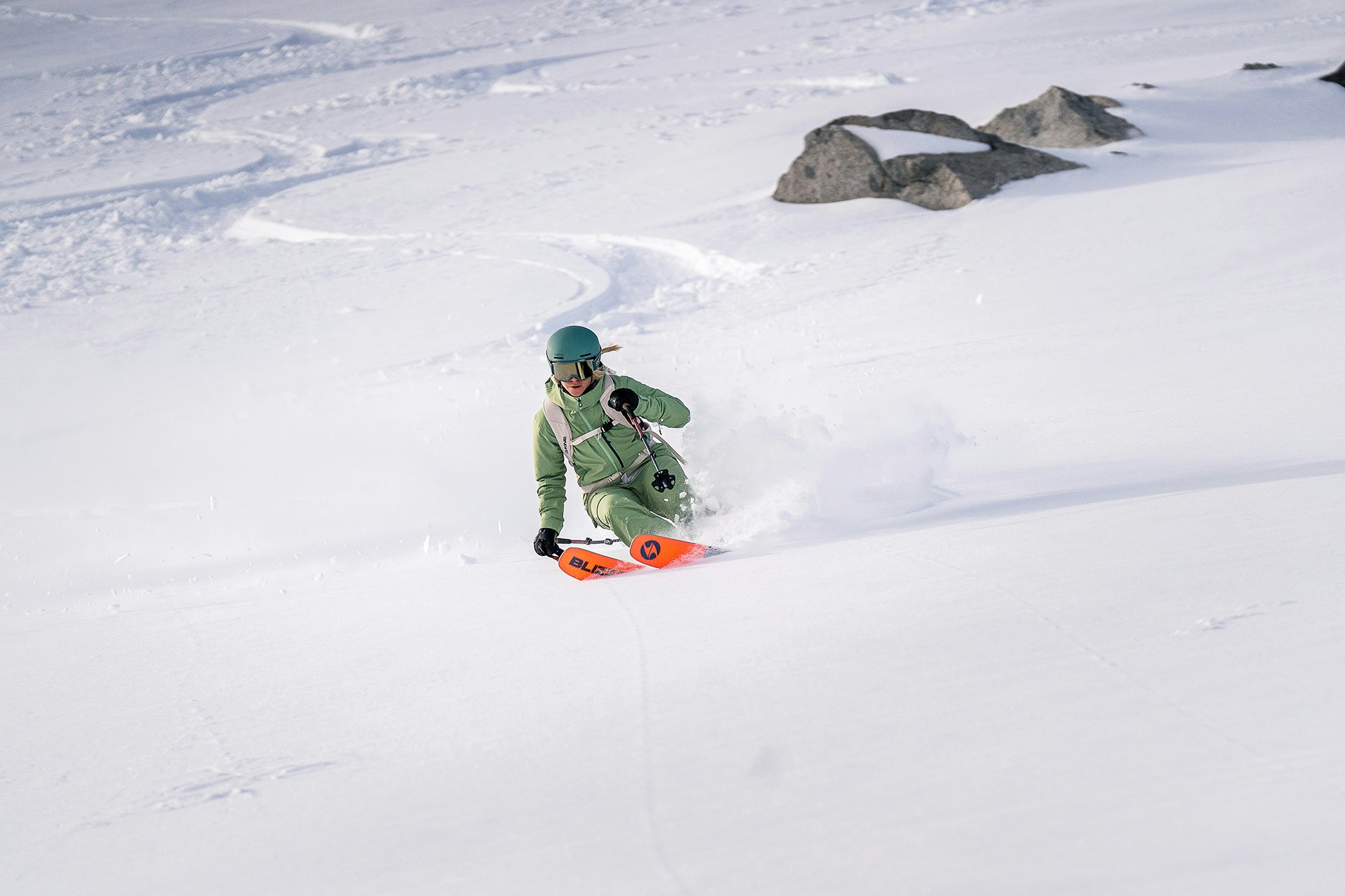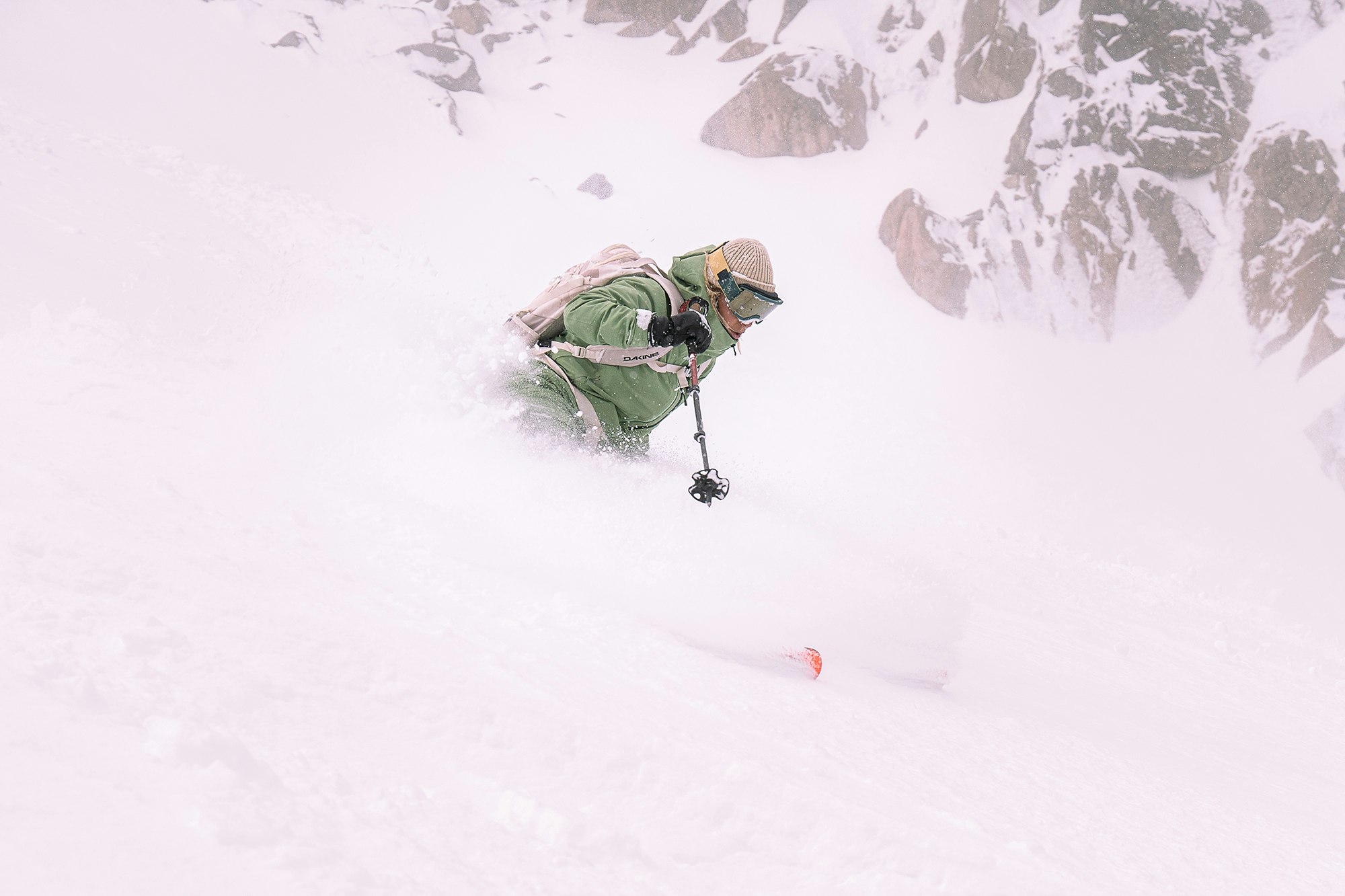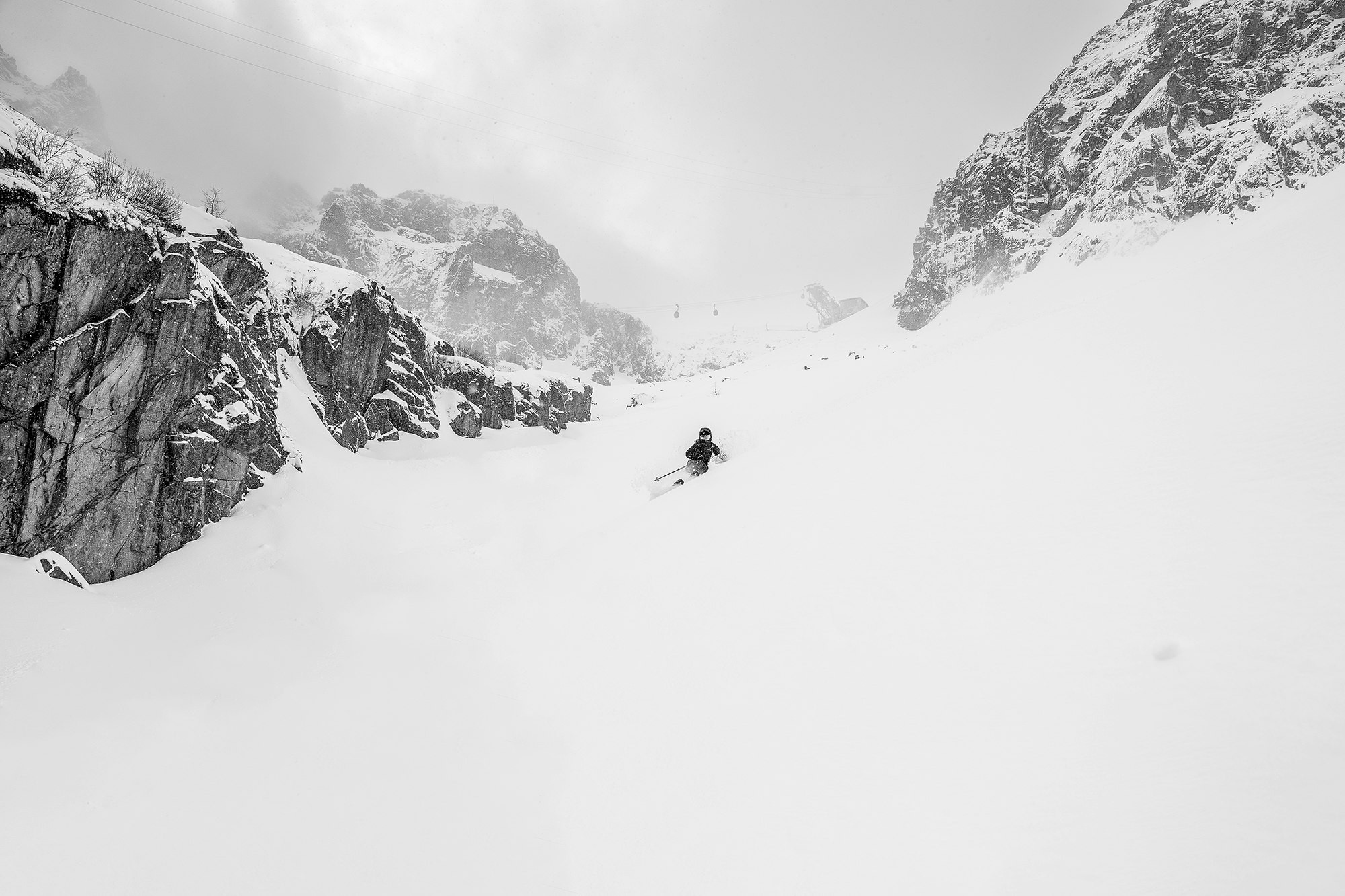How women's skis, boots and bindings are changing
The future is here
- Author: Michele Guarneri
- Photographer: Giovanni Danieli
It’s undeniable, the number of women drawn to ski touring is steadily increasing and will continue to do so as long as there is snow on the mountains.
The stereotype of the timid girlfriend tagging along with her partner on moderately difficult skimo outings has been banished for good. Take trail running as an example, a discipline where in terms of physical fitness, training intensity, and difficulty, the bar continues to be raised, closing the gap with the men’s sport.

Women take on steep, challenging 2,000 m (6,500+ feet) verticals, using crampons and ice axes, sometimes with two or three transitions along the way. They train a few times a week, on and off-piste; if there’s nobody to go with, they’ll probably go anyway. They don’t settle for hand-me-down equipment these days, and can more than handle skis wider than 80 mm underfoot. On the back of this positive trend that has upended sales quotas in the last couple of years (in some countries, Dynafit has seen turnover from women’s sales overtake those of men’s equipment), we have decided once again to dedicate time and space to examine a market that shows no signs of slowing: one conceived, designed and built especially for women.

But what does built especially for women actually mean? Not colors, that’s for certain. Women’s physiques and musculature differ from those of men in that they have a lower center of gravity that is set slightly further back, and the weight/power ratio of the average woman is lower. This means that equipment built for them, be it skis or boots, should have different characteristics. As well as having less physical strength, as demonstrated by their lower explosive force, women’s calves are shaped differently. They are generally lower and rounder. Which is why, aside from a softer flex, the main difference between unisex and women’s boots is in the shape around the back of the leg, with lower liner and cuff, which are sometimes contoured.

In terms of women’s skis, they are usually less stiff, more pliant and deform more easily. As ever, we’re not trying to generalize, what has been designed for women also works for some men. Male skiers with lower calf muscles sometimes prefer women’s boots, and others who are less powerful skiers feel more at home on softer skis. This is how brands can and must tailor their offerings to women. At least this is the way the market is headed, some brands like Armada and Fischer prefer to make unisex models where the only thing that changes is the color. Time will tell, but one thing is certain: we won’t see a woman skiing a 193 cm titanal-reinforced pro model with a 28 m radius—unless it’s Sofia Goggia. One other area where male and female ski tourers differ is in their technical knowledge. While, compared to last year, more are doing their own research, women on the market for new gear still often turn to equipment geek friends or expert salespeople for advice.

This isn’t just down to uncertainty, but also a clear information gap where women’s equipment is concerned, which is still not valued as it should be.
To brands we say: the future is female, take note. In this section you’ll find different categories of products of varied widths, weight, flex and stiffness. The top picks suitable for all and technical products for more demanding skiers. In the knowledge that, considering the sustained growth in this segment, we’ll have to dedicate even more space to it in future.
Share this article

